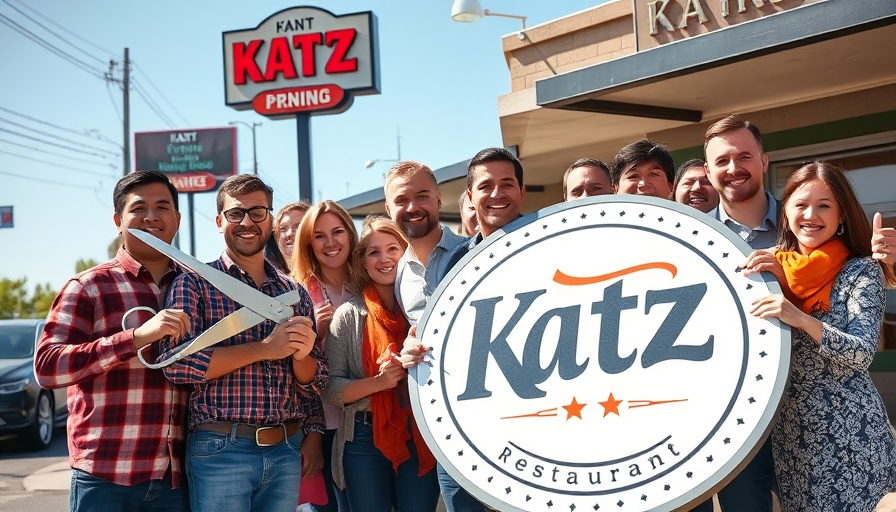
A Taste of New York: Katz’s Never Kloses Expands in Houston
In an exciting development for the Houston dining scene, Katz’s Never Kloses has officially opened its doors in Memorial City, redefining the landscape of 24/7 dining in the area. The beloved restaurant, known for its eclectic menu and vibrant atmosphere, debuted its fifth location at 10321 Katy Freeway on September 2, 2025. With an emphasis on upscale dining and round-the-clock service, Katz’s is set to make its mark in West Houston and Katy.
Community-Focused Opening
The grand opening of Katz’s in Memorial City was not just a business launch but a community celebration. Prior to welcoming the public on September 2, Katz’s hosted a Charity Day on August 31, donating 100% of that day’s revenue to the Kerr County Flood Relief Fund. This thoughtful gesture not only showcased Katz’s commitment to its community but also served as an effective practice run for the new staff.
Katz’s Signature Offerings: More Than Just Dining
The new Katz’s location promises to offer all the favorites that have made it a household name in Houston, with a little something extra. Guests can indulge in all-day breakfast, handcrafted cocktails, and a selection of desserts that tantalize the taste buds. The introduction of the “Monthly Signature Slice,” starting with the vibrant Lemon Italian Crème Cake, and refreshing “Sun-kissed Sips” cocktails highlight Katz’s ability to innovate while staying true to its roots.
Why 24/7 Dining Matters
For restaurant owners, the appeal of 24/7 dining is significant. It opens a steady stream of revenue by catering to night owls and early risers alike. Katz’s approach demonstrates how diversifying hours of operation can lead to business success. Owner Barry Katz emphasizes the goal of offering unmatched service and ambiance.
A Legacy of Flavor and Service
Katz’s history in Austin dates back to 1979, marking it as a pioneer in bringing New York-style flavors to Texas. Its move to Houston in 2000 allowed it to thrive in the bustling culinary scene. With locations like Montrose, The Woodlands, and Galleria leading the way, Katz’s continues to be a model for how restaurants can successfully merge tradition with innovation.
Trends in Dining: Why Katz's Chooses 24/7
As dining habits evolve, consumers are increasingly seeking out options that fit their schedules. The trend towards 24/7 dining provides flexibility, encouraging spontaneity while accommodating diverse lifestyles. Katz’s awareness of these shifts enables it to meet and exceed customer expectations, a critical factor for success in the competitive restaurant industry.
Conclusion: Katz’s Commitment to Excellence
As Katz’s Never Kloses embarks on this new journey in Memorial City, it continues to embody the spirit of Houston's diverse culinary culture. For restaurant owners, the success of Katz’s in tapping into round-the-clock dining provides the perfect case study on evolving consumer preferences and the importance of community engagement. By prioritizing quality and service, Katz’s not only feeds hungry patrons but also fosters a sense of unity and support.
For those interested in creating that same sense of community or looking to expand their own dining options, there are lessons to be learned from Katz’s model. Embrace flexibility, focus on quality, and never underestimate the power of bringing people together. Katz’s invites everyone to experience its new location, a testament to dining that truly never closes.
 Add Row
Add Row  Add
Add 



Write A Comment